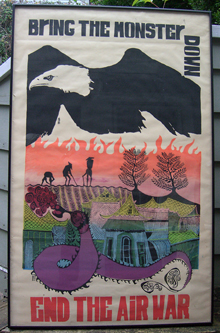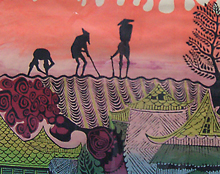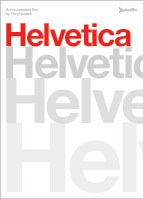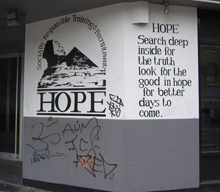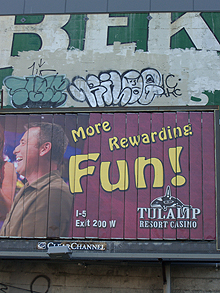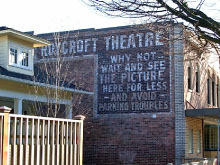If you’ve been to our house, perhaps you have, though it’s currently displayed in an unconspicuous place. I’ve had this poster since I picked it up on the street in Berkeley, California, sometime in the early 1970s; most likely during the year I lived in San Francisco after graduating from college in 1971. I bought it not just for its political content but because it was beautiful. But I’ve never been able to find out who made the poster.
It’s silkscreened, in many colors. There’s no signature. The art is brilliant, the lettering very funky (deliberately, I assume), and the vertical placement of the word “DOWN” is witty. But who did it? I asked David Lance Goines, who I thought might know, but the artist he suggested wasn’t working in Berkeley that early in the ’70s. Have you seen this poster before, or other work by the same artist? I’d love to solve this mystery at last.
When I got this framed, several years ago, by the Seattle artist and frame-shop owner Kay Rood, she reminisced about her days in France in May 1968, helping student radicals print revolutionary posters for that spring’s huge demonstrations. But alas, she said ruefully, it never occurred to her to keep copies of any of them.
[Update, Dec. 14:] I’ve added a close-up of a detail from the poster, to give a little better idea of what the artwork is like. Some of it reminds me of cut-paper techniques and of woodblock prints, though this is silkscreened.
Categorized as ambient letters, culture, design |




